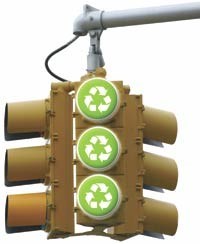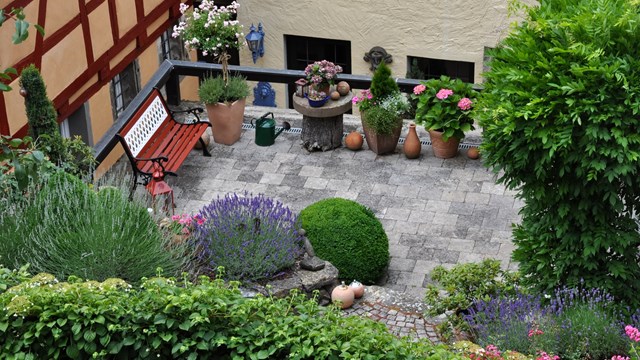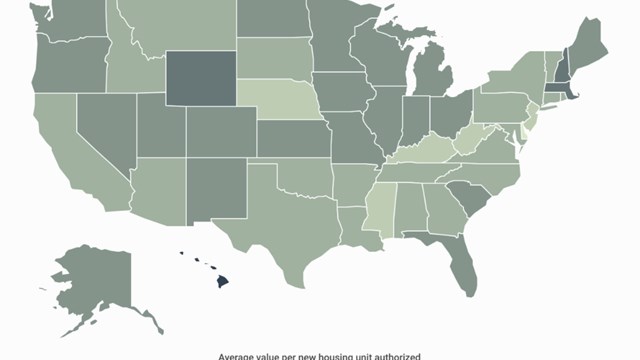
Green truly is the new black in the Garden State. As more and more condos and HOAs look to save money as expenses rise, more and more boards and unit owners are exploring ways to incorporate “greening” into their building community.
Green homes are expected to grow between 29 percent to 38 percent of the residential construction market by the year 2016, which is equal to $87 billion to $114 billion of that market, according to a 2012 McGraw Hill Construction study.
According to the U.S. Green Building Council, whose Leadership in Energy and Environmental Design program is the gold standard, the residential market—from multi- to single-family, from market rate to affordable housing, is reaping the benefits of using green building techniques. Since the launch of LEED for Homes in 2008, more than 30,000 homes have received LEED for Homes certification and nearly 93,000 are registered for certification. Over half of all LEED-certified homes are in the affordable housing category, the USGBC says.
And cities and towns are rapidly getting on board, too. For example, the town of Cranford passed an ordinance establishing a Green Building Density Incentive program whereby redevelopers who achieve LEED certification and comply with the specific program requirements may earn a development density bonus from the township.
The New York Timesrecently reported that there are approximately 1,262 certified LEED for Homes units in New York State and 1,658 in New Jersey. According to Mitchell Frumkin, P.E., RS, CGP, the president and founder of Kipcon, an engineering consulting firm in North Brunswick, going green is certainly a trend among condo associations and multifamily units these days. There is more interest but there needs to be more education among both management, building staff and homeowners as to what options and incentives are available, he explains.
Frumkin cites New Jersey’s Pay-for-Performance program as a good place to start. The New Jersey Clean Energy Program (NJCEP) offers the Pay for Performance incentive program to help install energy efficiency improvements in industrial, commercial and multi-family residential buildings. Existing buildings must have an annual peak electricity demand greater than 100 kilowatts (kW) in order to qualify. This program, he says, is actually funded by state residents through the societal benefits charge that is on every customer’s retail electric or gas service bill. So they’re actually funding the program and might as well take advantage of it, he says. As of December 2012, the state had expended $34.4 million in incentives to program participants, of which 78 were multi-family developments.
More and more communities are trending towards green alternatives, concurs Jason Kliwinski, AIA, LEED AP, and the director of sustainable design at Spiezle Architectural Group in Princeton, New Jersey. He notes in a recent interview that there is much interest in green, especially over the last five years.
“Over the last five years, the skepticism and convincing needed around green building has morphed into a demand and requirement by clients of all types. The drivers,” according to Kliwinksi, “are threefold. First, is climate change: The environmental aspect of climate change has now been widely accepted due to the science behind it and extreme record-breaking weather events.
“Second is economic sense: Increased operating costs due to high utility rates, combined with lower construction costs due to more experienced manufacturing and construction force, have allowed LEED-certified Silver and even Gold buildings to be built today at the same or less cost as conventional buildings; and third, is human health: People are the most costly expense associated with any building, and more importantly, we spend about 90 percent of our lifetime in buildings,” he says, adding that it makes sense for a building’s air quality to conform to environmental standards.
A Greener Garden State
There are multiple benefits and residents want to live in green buildings because they’re healthier, more energy-efficient, and have greater resale value. Not only can greening an existing or new building reduce operating and maintenance costs, optimize capital expenditures, increase efficiency, extend the life of buildings and building systems and minimize negative impacts on the environment but also contribute to lower vacancy rates and higher property values.
While it’s common for buildings or associations of any size to have designated committees in place to help boards and management handle aesthetic, social and other community concerns, ‘green’ committees are emerging as a more recent trend throughout the Garden State and across the country as environmental consciousness is raised.
Green committees are similar to any other building committee in the sense that they’re typically a group of residents who are voted into the committee to help with a common goal. In the green committee’s case, the goal is creating an eco-friendly building environment that can influence everything from the paint choices they use when painting the common areas to creating, installing and maintaining a green roof for the building.
Allan Samuels, LEED AP, founding partner at Energy Squared LLC, an energy design consulting firm, and a subsidiary of New Jersey-based Kipcon, notes that “from our experience, most communities are interested in going green but they are not prepared spend additional money to achieve this goal. The challenge that we have is to give the communities options to go green at no additional cost. What has made us successful is that we are able to offer technologies that will save money while going green.”
What You Can Do
Recycling, energy and water conservation, composting and improving landscaping techniques and methods are just a few of the things green committees may devote themselves to working on—and often, there are local and state-sponsored organizations and resources to help them achieve their goals.
It’s not only recycling however. Unit owners, boards and management groups have found that many of these eco-friendly measures are also cost-saving strategies as well. There are many things boards and residents can do on their own. In one particular example, Energy Squared was able to reduce energy consumption by 50 percent saving the board of an Elizabeth, New Jersey high-rise approximately $250,000 per year.
Some ideas include installing high-efficiency heating and cooling equipment like furnaces, boilers, air conditioners (and distribution systems). Secondly, you can install high-efficiency lights and appliances like LED lighting. Other options are to install water-efficient equipment, like water-conserving toilets, showerheads, and faucet aerators.
Frumkin says a good first step is to do a study, specifically, a green reserve study, like ones offered by his company. For example, he cited a Northern New Jersey 21-story high-rise that was 49 years old and needed replacement boilers and other items that would have cost a whopping $28 million dollars to replace over the 30 years, according to a traditional reserve study. The association board hired Kipcon to do a green reserve study and found that spending $700,000 on boilers, new space heating boilers, new domestic chiller, pumps and variable frequency drives, cooling towers and more efficient lighting resulted in saving 12 percent annually on their electricity costs and 32 percent on their gas costs. It comes out to a savings per year of $90,000 and over the 30-year life of the study, they anticipate saving approximately $2.7 million dollars, he says.
Get the Board on Board
While residents may take the lead, it’s up to management and the board to be as supportive as possible of green initiatives. Frumkin reiterated that education is key and some boards have a higher understanding than others about the benefits of greening their community. He notes that the best things association boards can do to save energy are to change out equipment, install higher efficiency lighting or make adjustments to the building’s envelope to reduce air infiltration. “I’d recommend they bring in a consultant, even if it’s just to educate them,” he says.
If your green committee is looking for a more holistic approach or a green building certification, then they can also get help from the three most popular building certifications: LEED with the U.S. Green Building Council, Green Globes or Energy Star. Currently, Energy Star does not have a multi-residential certification, but is expected to have one in 2013. Energy Star is also focused on energy only, rather than complete sustainability. LEED and Green Globes look at all building components in addition to other eco-friendly moves such as air quality and landscaping. Frumkin says New Jersey has a wealth of smart energy and incentive programs available to help.
Less is More
Another way condo boards and residents can help the environment is by greatly reducing their paper and waste streams. A new online-based service called “My Green Condo.net” can help in that regard, according to co-founder and business development manager Ranjan Sankarasivam. The New Jersey-based company is targeting homeowner and condo associations around the country and internationally to help boards, managers and residents become greener citizens.
The company’s vision, he says, is to “create a distinct online global residential platform that brings together residents (owner/tenant), property management, board members, vendors and associations while reducing operating costs, increasing transparency, enabling flawless communication, eliminating manual/paper processing and promoting a green environment.”
The way we look at it, there are many ways one board member or board members can contribute to green, he says. One example is solar power, or green waste management, or you can help by eliminating paper, that’s where we focus on, he says.
“In establishing a committee, a committee obviously will look at ways for greening. But what I can talk about is eliminating paper, because paper is a big, big part of keeping green in any community,” Sankarasivam says.
Both boards and property managers handle a lot of paper on a daily basis, whether it is leases or contracts, work requests or order forms, bylaw amendments or house rules, he says. Property managers are constantly sending out faxes, collection notices, work order requests, notices about landscaping or ongoing painting projects, and more. “There are a lot of papers that get circulated.”
Sankarasivam says his business can help with that. “So what we do is that we have 40 different functionalities in our online application. For property management, that will help eliminate completely every paper within the building and also every property management operation associated with the building. We offer things like e-fax, e-signatures, sell tickets or collect money online. We offer Microsoft Share Point that allows board members and committees and vendors working on electronic documents to manage them in electronic form, and provide links that can be used to share with people in email.”
Sankarasivam says, “This obviously promotes green and there are many subsequent benefits attached to it. Three main benefits: One of them is a substantial cost savings. One of it is no more paper, memos, contracts, faxes, that saves you money—a paper reduction, no fax machine, no filed paperwork or storage. You don’t have to keep files.”
But not everyone has access to computers, email, or is conversant with computer lingo, especially older residents, he notes. To encourage adoption of online resources, he recommends that boards provide the access themselves. “In today’s day and age, every place will have an Internet connection. The challenge is always, what type of community? In some of the elderly communities, what we always do is encourage every building who is our client to put a computer in the common areas of the building. And then you have everybody walking by and come into the common area and they sign in with a user name and a password. That’s really worked well. You have a selection of people who can’t do this and the board can make a decision to do paper-based mailings specifically for them,” he says.
“The idea of automation that always gets shuts down is that there are people out there that can’t use it. It’s a different mindset. That’s where we actually can make a difference. We can show that there’s a cost savings for doing this.”
Sankarasivam said this service also promotes continuity, as all the community documents, whether they are bylaws/house rules, administrative operations, management forms, residential leases, etc., can be stored digitally, and will be there for future generations. Board members change, management companies change, unit owners change, but the building’s institutional memory and recordkeeping will remain intact, he says. MyGreenCondo, Inc., which was founded in 2011, will do a case study and provide a cost benefits analysis to any condo community or HOA looking to automate their building operations.
“When we go to an association, we prove to them that our cost is minimal to the comparison that the cost savings they are going to achieve,” he says.
It Just Takes One
So while you may not have your own green committee, you can always encourage recycling when the board is speaking about garbage choices; ask about energy efficient light bulbs the next time someone runs to Home Depot to replace the current light bulbs; and before grabbing a bottle of Windex to clean the tables in the lobby, you can ask the board to switch to a more ecofriendly, natural cleaning solution.
It only takes one or two or a handful of residents per building to form a green committee but doing so can make real changes to your homes, the planet and your community’s bottom line.
Danielle Braff is a freelance writer and a frequent contributor to The New Jersey Cooperator. Managing Editor Debra A. Estock contributed to this article.






Leave a Comment